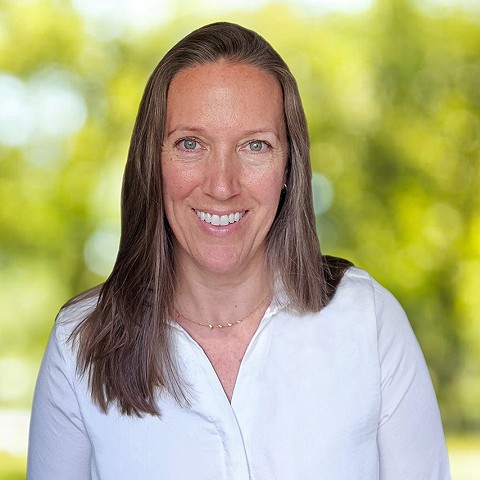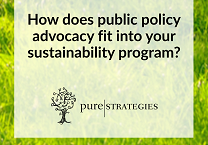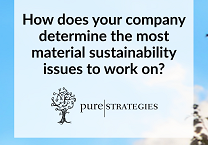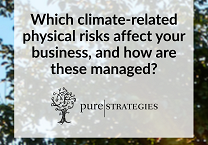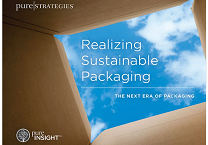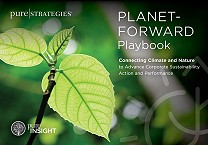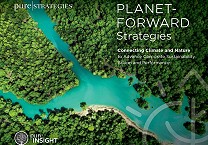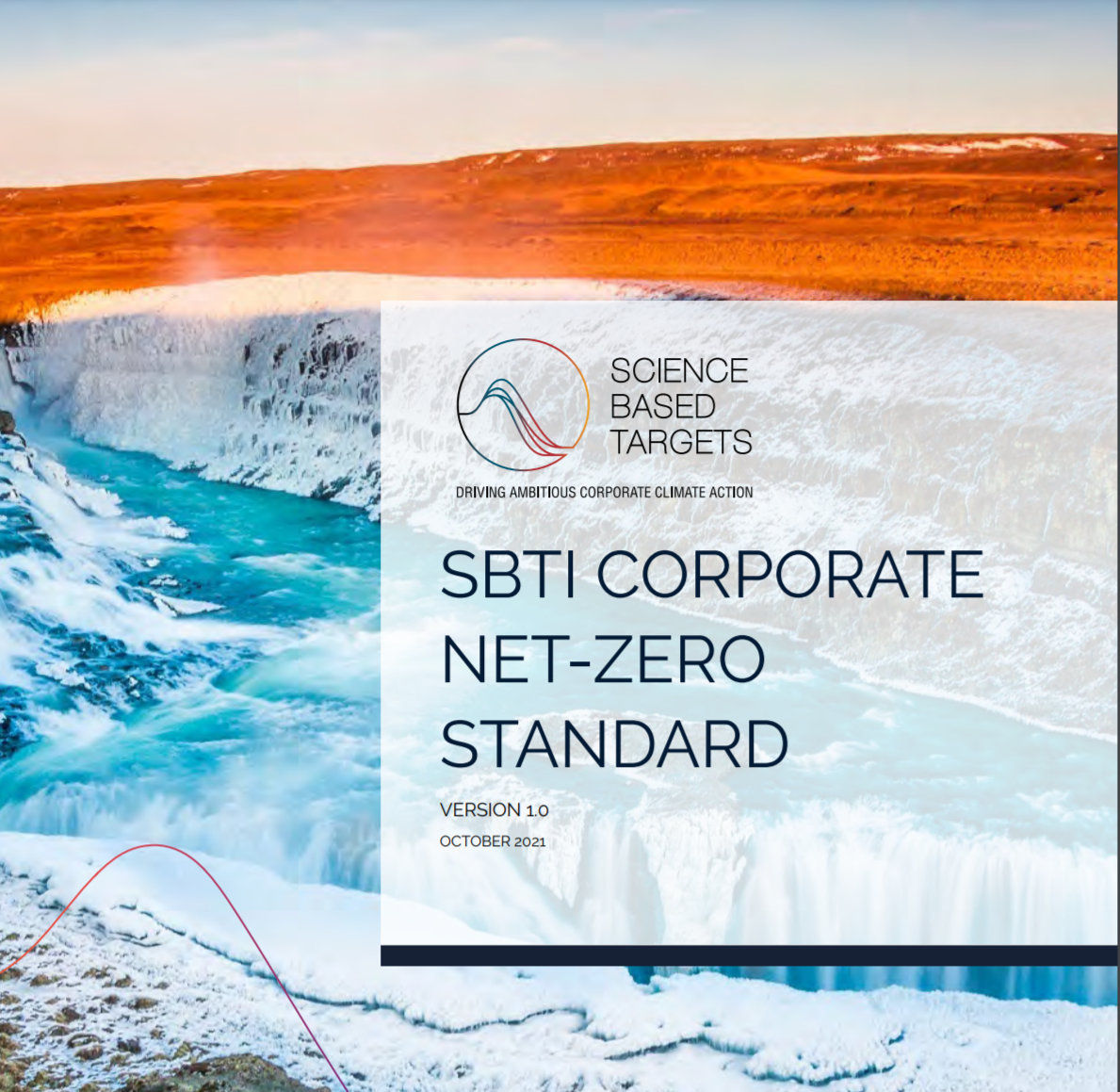
Highlights of the New Net-Zero Standard
by Cheryl Baldwin, PH.D.
03 November 2021
The United Nations has warned that the planet is on track to warm by more than 2.7 degrees Celsius by the end of the century. Climate scientists say that this level of warming will lead to devastating effects such as: extreme heat and weather events, sea level rise, biodiversity loss, and crop yield reduction—disrupting every-day life and business activities.
We are not doing enough. We need to reach net-zero greenhouse gas emissions by 2050. Companies have been exploring this aim, but without clear guidance, there have been different approaches with various degrees of robustness. So, the Science Based Targets Initiative developed guidance to provide a science-based standard for net-zero targets.
What are net-zero targets?
Net-zero targets: (a) REDUCE scope 1, 2 and 3 emissions to zero or to a residual level that is consistent with reaching net-zero emissions at the global or sector level in eligible 1.5°C scenarios or sector pathways and; (b) NEUTRALIZE any residual emissions at the net-zero target date and any GHG emissions released into the atmosphere thereafter.
Net-zero targets are set to be achieved either 1) within ten years, or 2) in more than ten years. If the net-zero target is set for more than ten years, then both the near-term and long-term science-based emission reduction targets are needed, following the requirements and recommendations in the Net-Zero Standard.
Cross-Sector Target Examples:
- Near-term Absolute: Reduce scope 1, 2 emission 4.2% and reduce scope 3 emission 2.5% (linear annual reduction) by 2030.
- Long-term Absolute: Reduce scope 1, 2, 3 emission 90% by 2050 (with base year not before 2015) and neutralize residual emissions.
Are near-term targets that same as SBTs?
The guidance for near-term SBTs has changed to be more aggressive to address the urgent and aggressive action needed. If you already have an approved SBT, you should review the new guidance and be prepared to update your target (the new guidance largely takes effect July 2022, though goals that meet the new standard can start to be validated by SBTi in January 2022).
Boundaries: Near-term targets have the same boundaries as before, including 95% of scope 1 and 2 emission and 67% of scope 3 emission if greater than 40% of total emission are from scope 3. However, long-term SBTs (ten-years or later) include 90% of emission for scope 3.
Ambition: The ambition level for scope 1 and 2 SBTs is now 1.5°C (from a minimum of well-below 2°C) and for scope 3 it is well-below 2°C (from a minimum of 2°C). For long-term SBTs, it is 1.5°C (from a minimum of well-below 2°C) for Scope 3.
Timeframe: The timeframe for near-term SBTs is now 5-10 years (from 5-15 years). Long-term SBTs must be met by 2050 at the latest.
SBTi is developing sector-specific guidance to clarify additional considerations. For example, for the first time there will be Forest, Land Use, and Agriculture (FLAG) guidance that will impact businesses such as food manufacturers, grocery retailers, and food service companies. Near-term guidance for FLAG is expected in March 2022 (long-term guidance included in the net-zero standard).
Can carbon credits (also known as offsets) be used to reach net-zero?
SBTi notes that carbon credits do not count as reductions toward meeting your SBTs. Carbon credits may be used for neutralization of residual emissions. However, deep reductions are needed prior to neutralization and where carbon credits may be an option.
Should my company start focusing on neutralization?
Companies should start to think about lining up GHG removal projects, along with their reduction efforts. It can take several years to develop and launch neutralization/removal projects and it is important that businesses have enough GHG removals to neutralize their residual emissions by their target year and thereafter.
Have more questions? Contact us, our team can help you navigate this net-zero standard and target-setting.
Written by Cheryl Baldwin, PH.D.
Cheryl Baldwin, Ph.D., is a Vice President of Sustainability Consulting for Pure Strategies where she partners with corporate clients to develop and execute sustainability strategies to improve performance across retail, food and agriculture, home and personal care, and cosmetics industries. She also leads the firms’ global market research to generate new insights to accelerate business transformation.
Cheryl’s recent projects include helping build a leading nature strategy for Toyota Motor North America, developing sustainability goals for TAZO, creating a sustainable packaging strategy and implementation tools for Walmart, and advancing a sustainable chemistry program for Sephora. Cheryl also worked with industry groups to support broader impact including, FMI, the food industry association, and the National Retail Federation (NRF).
Cheryl authored Pure Strategies’ market research reports: Planet-Forward Strategies, Connecting to the Farm, Reaching the New Corporate Frontier, Advancing on the Path to Product Sustainability, and other reports. She wrote the book, The 10 Principles of Food Industry Sustainability and is the lead author/editor for two additional books on sustainability, Greening Food and Beverage Services and Sustainability in the Food Industry and holds U.S. and international patents.
Prior to Pure Strategies, Cheryl led the life cycle research and sustainability standard program for the non-profit ecolabel organization Green Seal. Cheryl also worked in Research and Development for Kraft Foods, Inc. where she was involved in all phases of R&D from novel ingredient development to global product commercialization. Cheryl holds a Ph.D. and M.S. from Cornell University and a B.S. from the University of Illinois, all in Food Science.
Cheryl has been named one of the Top 50 Women Leaders of DC for the second consecutive year, based on a methodical review of women executives and leaders across the area. She was identified for her career track record, including her leadership position at Pure Strategies. The recognition came from Women We Admire (WWA), a membership organization of over 1,200 of the most accomplished women leaders in business, law, consulting, education, non-profit and other sectors. based on a methodical review of women executives and leaders across the area. She was identified for her career track record, including her leadership position at Pure Strategies. The recognition came from Women We Admire (WWA), a membership organization of over 1,200 of the most accomplished women leaders in business, law, consulting, education, non-profit and other sectors.


